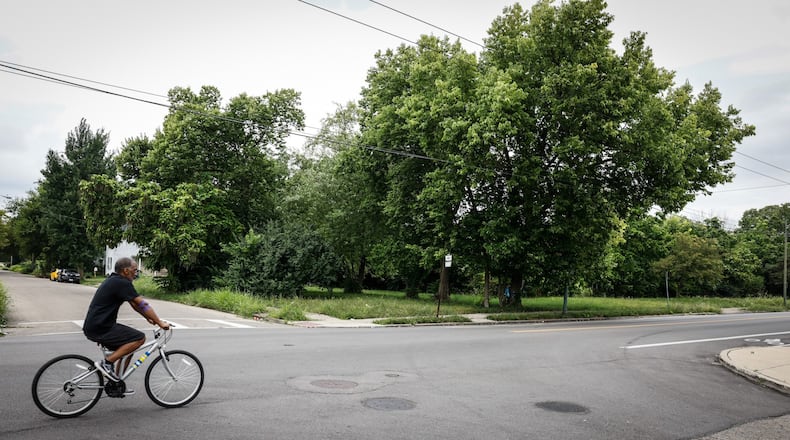A growing concentration of affordable housing units in West Dayton could harm the area’s marketability and chances of attracting market-rate investment, said Jeff Payne, a member of the City Plan Board.
“My issue is in the aggregate ― what’s happening to all of greater West Dayton when it comes to this kind of land use,” he said.
Payne has called on city staff to do an analysis of the distribution of affordable housing in the city.
Earlier this month, the City Plan Board voted 3 to 1 to table a request by Oberer and County Corp to replat some vacant properties they want to build new affordable housing on.
Replat requests often are approved with limited discussion and little to no controversy.
The partners propose constructing 28 new single-family homes in Wolf Creek on some parcels that were cleaned up through a state demolition program and acquired by the Montgomery County Land Bank.
Many of the properties previously were home to deteriorating structures with nuisance conditions.
The new homes would be available to renters who earn 60% and below the area median income.
Payne said he’s worried about an overabundance of affordable housing in West Dayton.
He brought up the same issue last month during a discussion about Homefull’s plans to build 100 to 200 new affordable units on the 800 block of South Gettysburg Avenue.
Payne asked city staff to produce an inventory of affordable housing in the city, compared to market-rate and homeownership units.
Payne at this month’s meeting moved to table Oberer and County Corp’s replat request until he receives the information he asked for.
“Concerns have been raised, they seem to be continually ignored and somewhere somebody has to say, ‘Stop, pay attention and go do some research,’” Payne said. “If you say what I am presuming and what I am stating is wrong, I challenge you to prove me to be wrong.”
The city continues to do housing work, said Tony Kroeger, Dayton’s division manager of planning and land use.
While Wolf Creek has a lot of promise and opportunity for redevelopment, right now only the area east of Broadway Street has real potential for market-rate product, he said.
The new proposed rental homes are west of the roadway.
But Kroeger said constructing new single-family homes on these “orphan lots” should help revitalize and hopefully boost interest in the area.
Other communities across the nation have seen heavy concentrations of affordable housing in poor areas.
Some research has found that new affordable housing in some places is going into so-called “low opportunity” areas that struggle with crime, low homeownership rates, underperforming schools and limited access to good jobs.
The Wolf Creek Homes lots right now do not have a realistic chance of becoming market-rate housing, said Greg Smith, developer with the Oberer Companies.
But Smith said affordable homes Oberer and County Corp have developed elsewhere in the city have improved whole blocks and neighborhoods.
Smith said their homes are clustered together, which makes a big difference.
Some affordable housing units built by other developers that are vacant and poorly maintained are too scattered to have a major impact on the surrounding neighborhoods, he said.
Credit: Jim Noelker
Credit: Jim Noelker
Oberer has used low-income housing tax credits to construct infill housing in the Twin Towers neighborhood in East Dayton and the Dayton View neighborhood in northwest Dayton, Smith said.
He said all of these affordable homes are occupied with waiting lists.
Smith said the new homes are a better and higher land use than existing conditions.
About the Author



